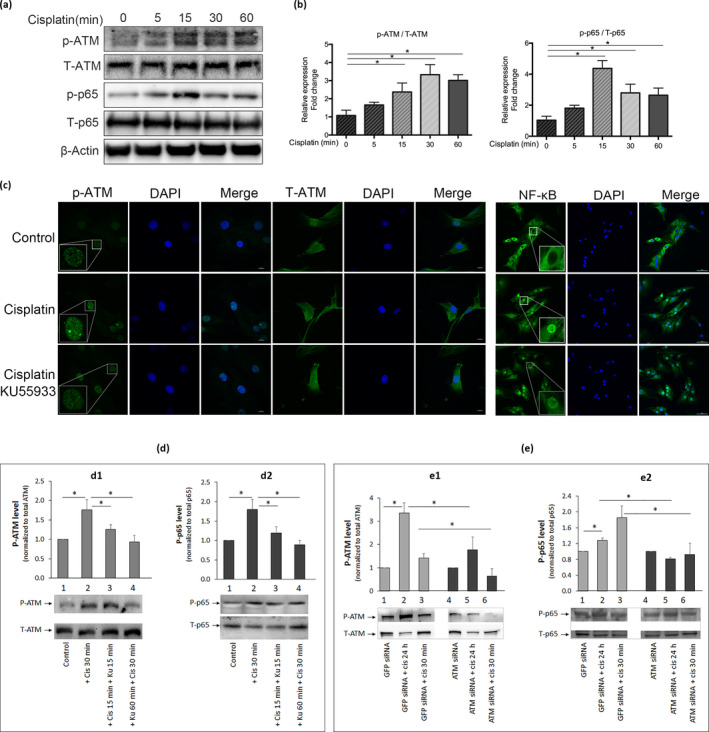Figure 2.

Cisplatin treatment activates ataxia telangiectasia mutated (ATM) and NF‐κB signalling in human nucleus pulposus (hNP) cells. Rapid activation of ATM and NF‐κB signalling in hNP cells following cisplatin exposure. (a) Western analysis of cell extracts following treatment of hNP cell culture with 50μM cisplatin for 0–60 min. (b) Activation of ATM and NF‐κB was assessed by measuring the levels of phosphorylated ATM (p‐ATM) and p65 (p‐p65) proteins, respectively, and normalizing to total ATM (T‐ATM) and total p65 (T‐p65) protein. β‐actin was used as a loading control. (c) Independent confirmation by immunofluorescence detection of cisplatin‐induced activation of ATM and NF‐κB signalling in hNP cells. Human nucleus pulposus cells incubated with or without 50μM cisplatin 30 min were immunostained for p‐ATM, total ATM (T‐ATM) and p65 (NF‐κB; green) and counterstained with DAPI (blue) to stain nuclei. NF‐κB activation was assessed by p65 nuclear translocation from the cytoplasm. p65 mostly resides in the cytoplasm of untreated (control) and nuclei of cisplatin‐treated hNP cells. In hNP cell cultures treated with both cisplatin and the ATM inhibitor KU55933, the level of nuclear p65 immunostaining decreased compared to cisplatin‐treated hNP cells. Images were taken at 400X. Scale bars, 10μm. Quantitative Western blots of p‐ATM (d) and p‐p65 (e) proteins in cell extracts of hNP cells treated with 50μM cisplatin for 30 min with 2μM KU55933 or ATM siRNA. Panel D also showed the effects of adding KU55933 before and after cells were treated with cisplatin. Both KU55933 and ATM siRNA treatment blunted cisplatin‐induced activation of ATM and NF‐κB. Graph shows average values ± SD. (n = 4), * p < .05 versus. control
